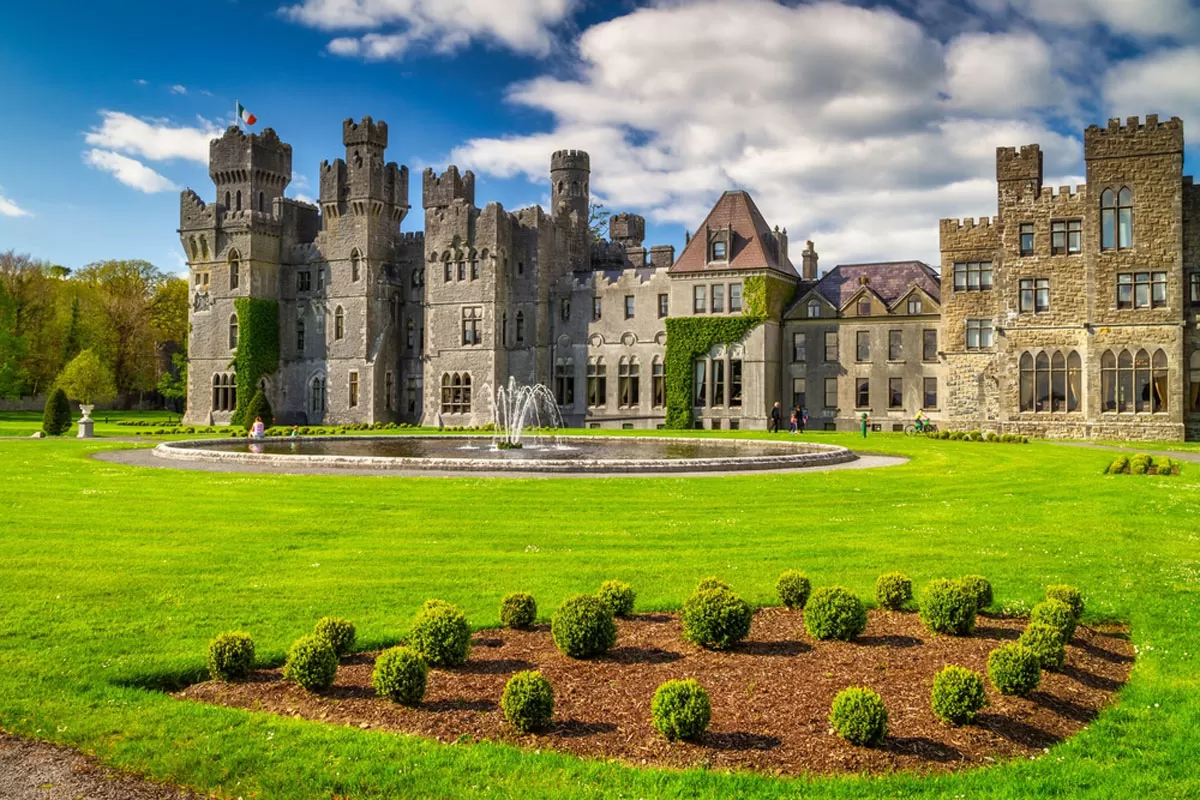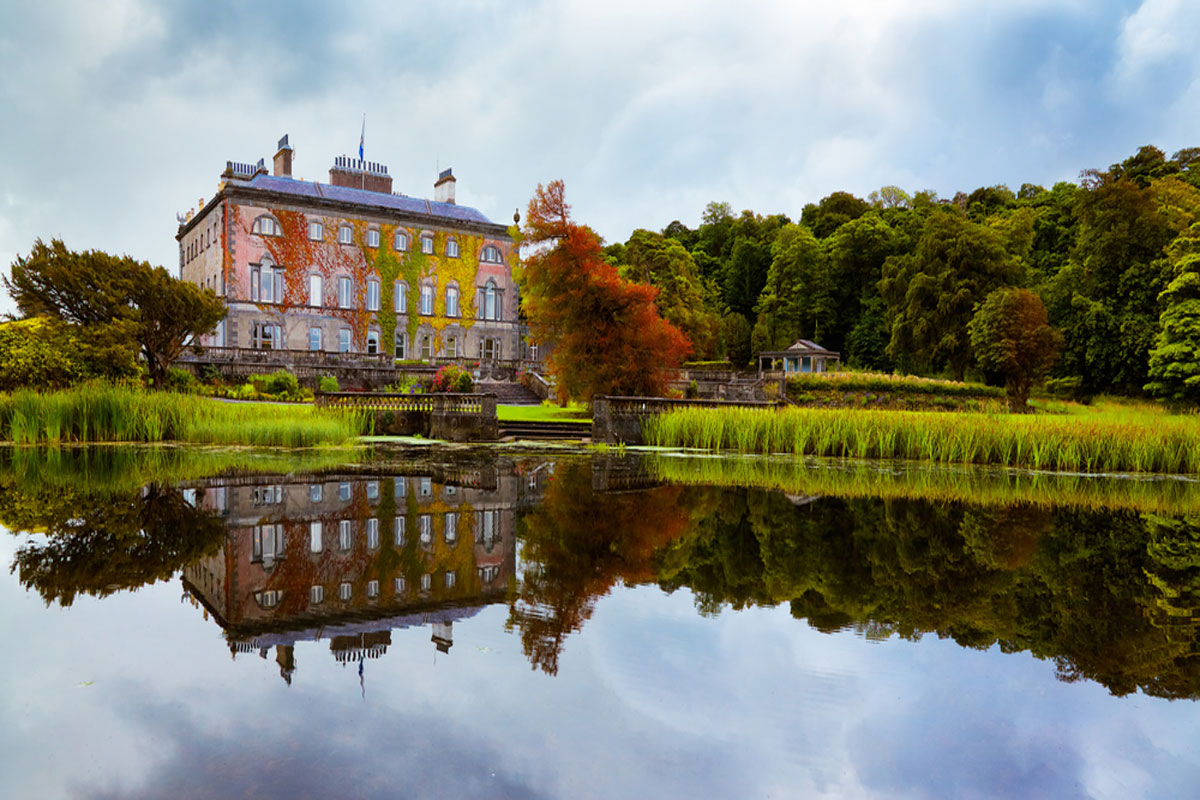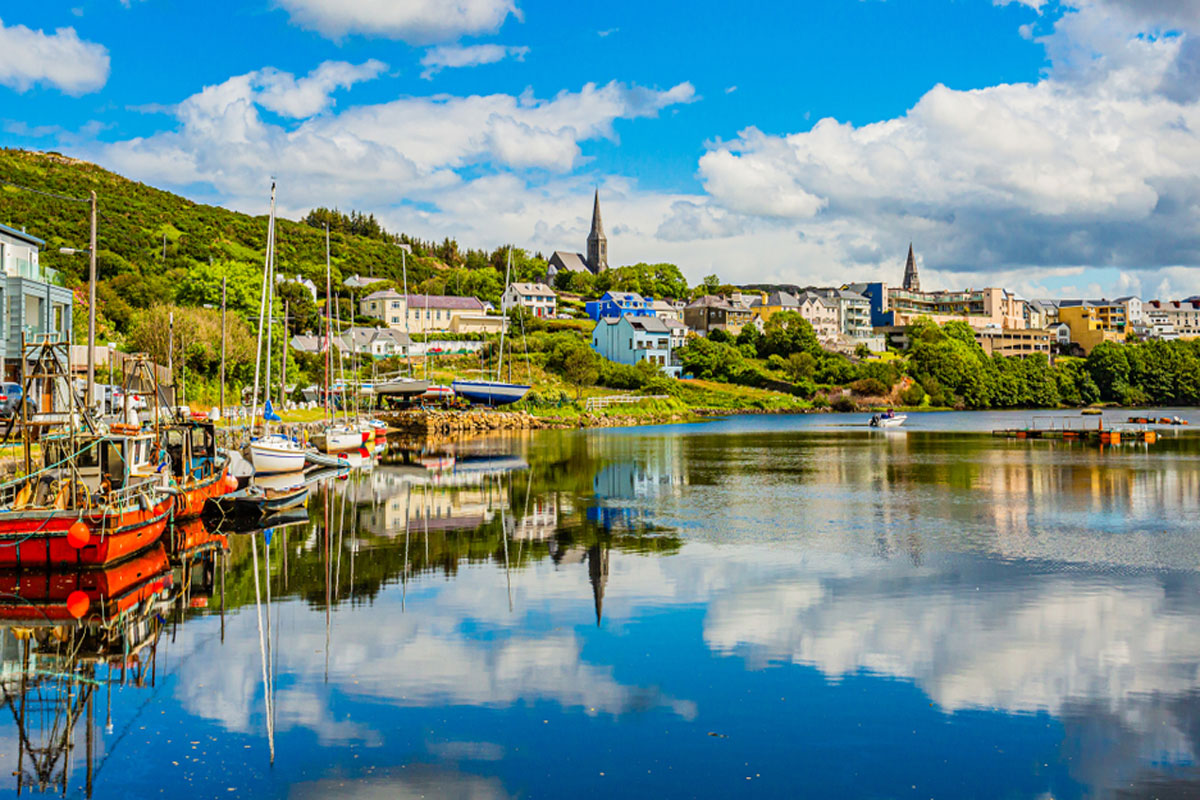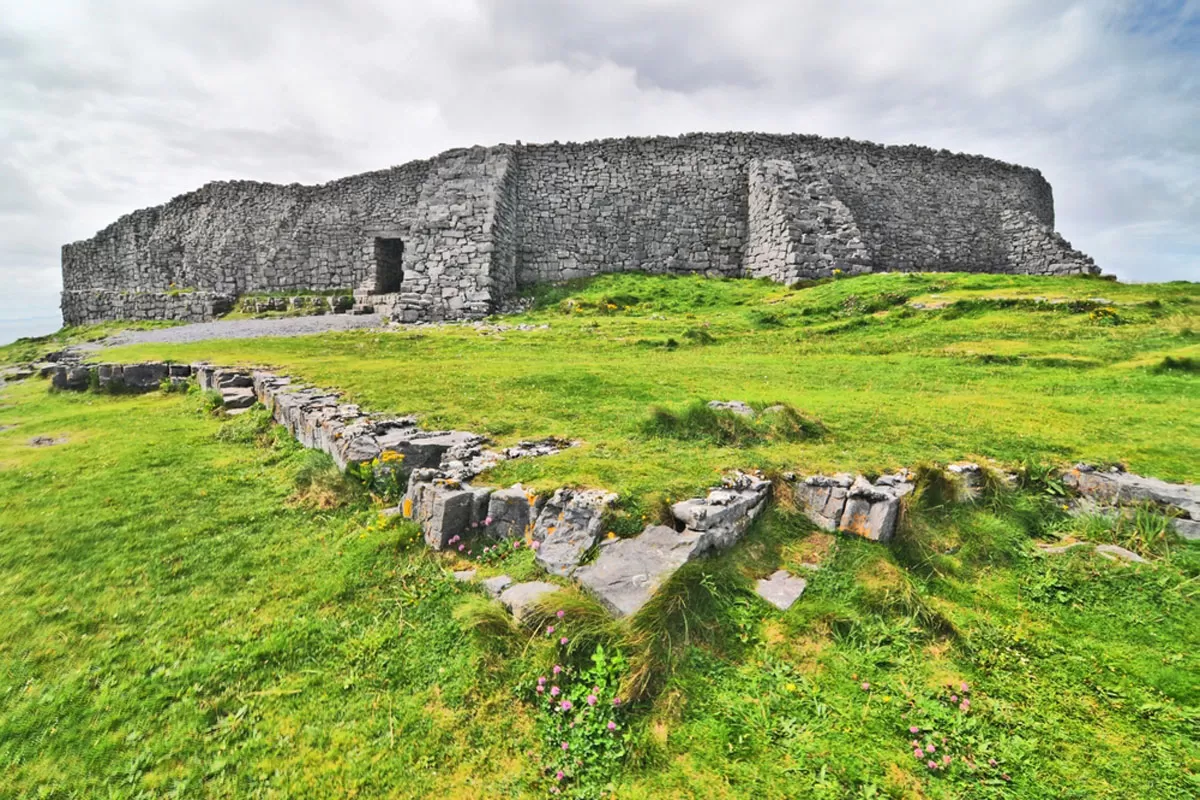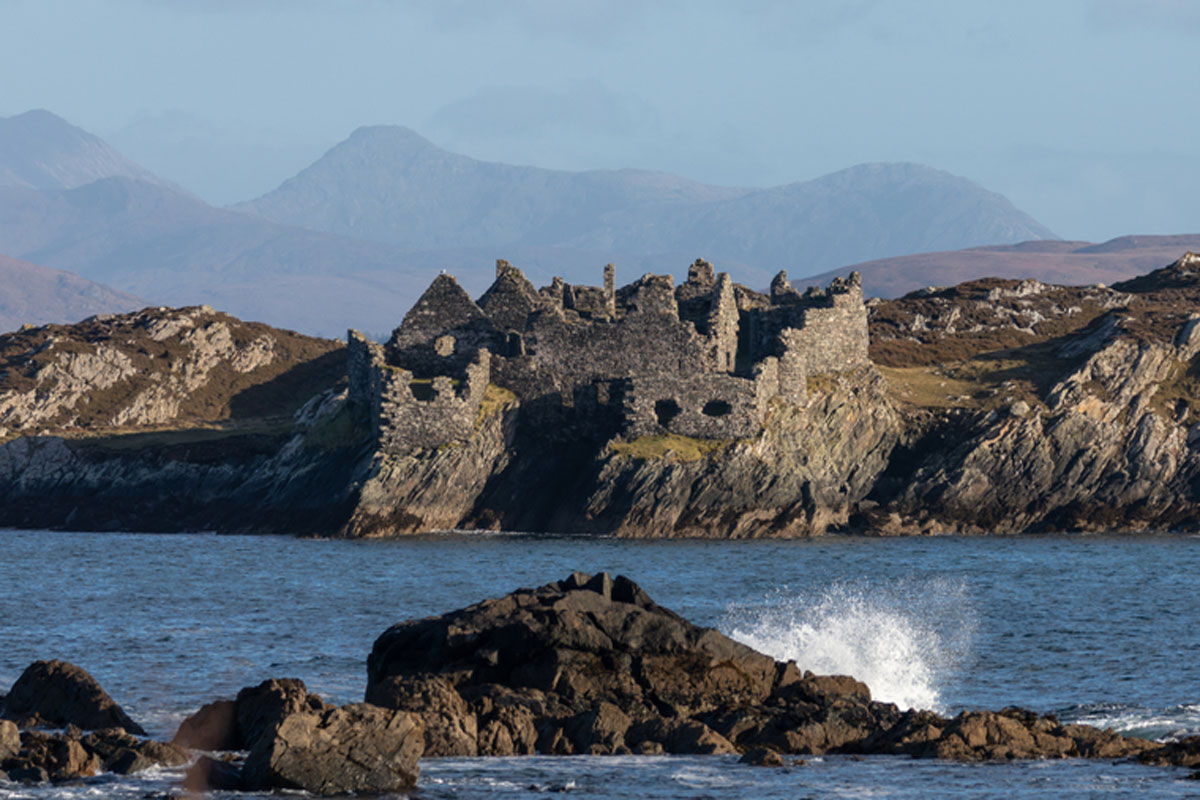Step back into 1950s Ireland at the Quiet Man Museum in Cong, where film history, Irish charm, and Hollywood nostalgia come to life.
Table of Contents
- The Quiet Man: A Hollywood Classic with Irish Roots
- The Village of Cong: A Perfect Film Location
- Inside the Quiet Man Museum: A Step into Cinema History
- Quiet Man Walking Tours and Filming Locations
- Why the Quiet Man Legacy Still Matters Today
The Quiet Man: A Hollywood Classic with Irish Roots
Released in 1952 and directed by the legendary John Ford, The Quiet Man is a timeless romantic drama starring John Wayne and Maureen O’Hara. The film tells the story of Sean Thornton, an Irish-American boxer who returns to his native Ireland to reclaim his family’s land and escape a troubled past. There, he meets the fiery Mary Kate Danaher, and their passionate, often comedic relationship becomes the heart of the film.
What set The Quiet Man apart was not just the captivating storyline, but its rich portrayal of Irish village life, rolling green landscapes, and traditional customs. It was a heartfelt homage to Ireland from Ford, whose parents were Irish immigrants. The movie was a critical and commercial success, earning two Academy Awards and cementing itself as a beloved classic in both the United States and Ireland.
Over seventy years later, the film continues to resonate with fans, and the Quiet Man Museum in Cong helps preserve and celebrate its legacy.
The Village of Cong: A Perfect Film Location
Cong, a picturesque village nestled on the Mayo-Galway border, was carefully chosen by John Ford for its timeless beauty and charm. Surrounded by Lough Corrib, ancient abbey ruins, woodlands, and winding lanes, Cong provided the perfect backdrop for the fictional village of Innisfree.
The village itself became a star of the film, with many of its streets, buildings, and landmarks featured prominently. Fans of The Quiet Man can still walk through the exact locations where scenes were shot, from the iconic dry-stone walls to the arched bridge and the thatched-roof cottages that dot the countryside.
Cong’s connection to the movie has become a cornerstone of its identity. While it remains a tranquil and scenic retreat, the village now welcomes film buffs, nostalgic tourists, and curious travelers alike. Many locals are proud to share stories passed down from their parents and grandparents who witnessed the film crew in action.
Inside the Quiet Man Museum: A Step into Cinema History
The Quiet Man Museum is located in the heart of Cong and is a lovingly recreated replica of “White O’Morn” Cottage, the home of Sean and Mary Kate in the film. Since the original cottage was filmed mostly in Hollywood studios, the museum brings the film’s interior to life through careful design, vintage props, and authentic memorabilia.
Visitors can explore:
- A replica of the cottage’s kitchen and living quarters, with period-appropriate furniture, crockery, and costumes.
- Original costumes and promotional posters from the 1950s film release.
- Rare photographs, letters, and film scripts related to the production.
- Information about John Ford, John Wayne, and Maureen O’Hara and their personal ties to the film.
The museum is family-run and deeply personal, often staffed by local guides with a true passion for both Irish culture and film history. For fans, it’s not just a museum—it’s a pilgrimage site. You’re welcome to take photos, try on hats and shawls, and relive moments from the film in the recreated rooms.
Even for those who haven’t seen the movie, the museum provides a window into rural Irish life, mid-century filmmaking, and the enduring impact of cultural storytelling.
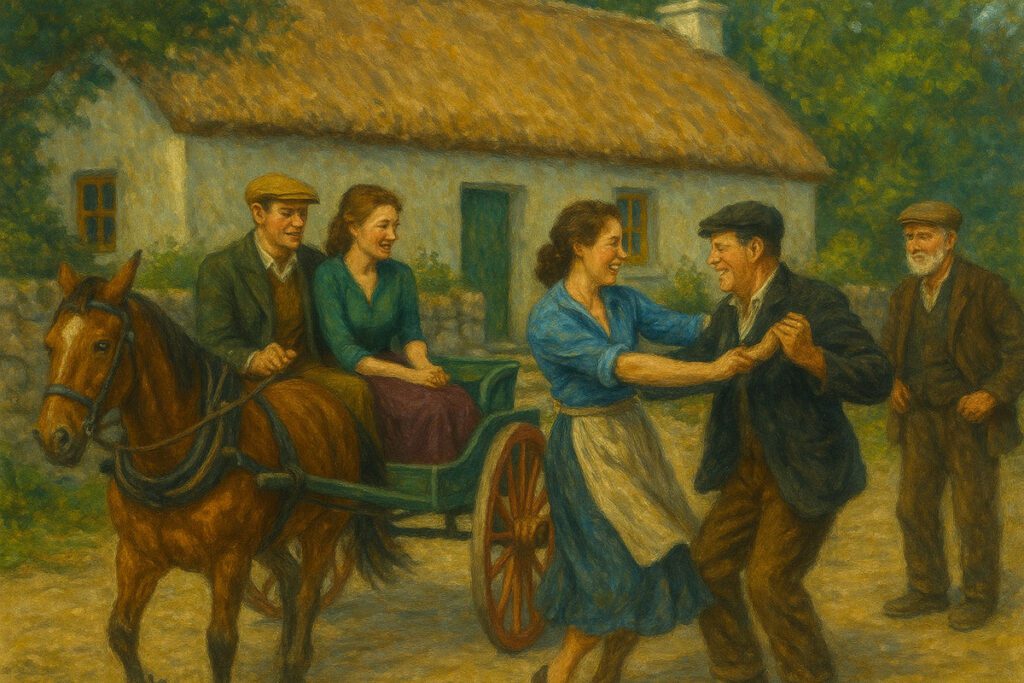
Quiet Man Walking Tours and Filming Locations
To complete the Quiet Man experience, visitors can join guided walking tours through Cong, led by local experts who bring the story and the scenery to life. These tours highlight more than ten filming locations, blending film trivia with Irish folklore and village anecdotes.
Key spots include:
- The Dying Man’s House – where Sean arrives in Ireland.
- Pat Cohan’s Bar – now a real pub where visitors can sit and raise a pint where John Wayne did.
- The iconic bridge scene location – one of the most memorable moments of the film.
- Cong Abbey and the surrounding forest paths – featured in scenic shots throughout the movie.
The tours often include storytelling, behind-the-scenes details, and fun reenactments for visitors who want to participate. They’re a wonderful way to explore Cong on foot and gain insight into how this sleepy village briefly became the center of the film world.
Some tours also include access to the original filming cottage ruins, located a few miles outside the village—though they are in disrepair, many fans still find it moving to visit the actual site of White O’Morn Cottage.
Why the Quiet Man Legacy Still Matters Today
More than a romantic comedy or a visual love letter to Ireland, The Quiet Man continues to matter for several reasons. First, it preserved a vision of Irish culture at a moment in time—highlighting rural customs, matchmaking traditions, and the role of the Catholic Church in village life. Second, it brought global attention to Irish landscapes and sparked interest in Irish heritage among descendants abroad.
For Irish-Americans in particular, the film holds deep emotional value. It echoed their longing for “home” and offered a romantic, if idealized, image of Ireland—full of music, mischief, and resilience.
Today, the Quiet Man Museum and the village of Cong continue to keep this cinematic flame alive. Events, film screenings, and themed festivals are held annually, bringing fans together from around the world. It’s not unusual to find a wedding couple dressed like Sean and Mary Kate posing on the bridge, or visitors quoting lines in thick accents with a pint of Guinness in hand.
The film’s impact also reminds us of the power of storytelling—how one movie can shape a place’s identity, inspire generations, and create connections between countries, families, and cultures.
Whether you’re a lifelong fan or a first-time visitor, the Quiet Man Museum in Cong offers more than nostalgia. It’s an experience rooted in film, history, and the timeless charm of Ireland itself.
Plan Your Visit:
Location: Circular Road, Cong, Co. Mayo, Ireland
Website: quietmanmuseum.com
Open: Seasonal hours – typically from April to October. Guided tours are best booked in advance.
Admission: Modest fee; group rates and family tickets available.
Natural Attractions
- Croagh Patrick – Ireland’s holy mountain, popular for pilgrimages and hiking, offering stunning views of Clew Bay.
- Achill Island – The largest island in Ireland, known for its dramatic cliffs, sandy beaches, and rugged landscapes.
- Wild Nephin Ballycroy National Park – A vast wilderness area with walking trails, a visitor center, and incredible dark skies for stargazing.
- Keem Bay – A picturesque horseshoe-shaped beach on Achill Island, perfect for swimming and photography.
- Downpatrick Head – A stunning coastal headland featuring the iconic Dun Briste sea stack.
Historical and Cultural Sites
- Westport House – A historic Georgian mansion with beautiful grounds, family attractions, and guided tours.
- Museum of Country Life – Part of the National Museum of Ireland, showcasing traditional rural life.
- Ballintubber Abbey – A 13th-century abbey that is still in use, known as the “Abbey That Refused to Die.”
- Ceide Fields – The world’s oldest known field system, with a visitor center explaining its Neolithic origins.
- Turlough Round Tower – A well-preserved round tower set in a scenic area.
Scenic Drives and Villages
- Westport – A charming heritage town with colorful streets, lively pubs, and excellent restaurants.
- Louisburgh – A peaceful village near stunning beaches and scenic routes.
- Murrisk – The starting point for climbing Croagh Patrick and home to the National Famine Monument.
- The Atlantic Drive – A scenic route offering breathtaking coastal views and access to Achill Island.
- Mulranny – Known for its stunning views of Clew Bay and access to the Great Western Greenway.
Lakes and Water Activities
- Lough Mask – A large freshwater lake popular for trout fishing and boating.
- Lough Conn – A tranquil lake ideal for angling and nature walks.
- Clew Bay – Famous for its 365 islands and opportunities for kayaking and sailing.
- Killary Fjord – Ireland’s only fjord, offering boat tours and dramatic scenery.
- The Great Western Greenway – A 42-kilometer cycling and walking trail connecting Westport to Achill Island.
Unique Experiences
- Foxford Woollen Mills – A working mill and visitor center showcasing traditional wool-making.
- Knock Shrine – A major Catholic pilgrimage site where an apparition of the Virgin Mary is said to have occurred.
- Inishturk Island – A remote island with a welcoming community, walking trails, and incredible sea views.
- Mayo Dark Sky Park – One of the best places in Ireland for stargazing, located within Wild Nephin Ballycroy National Park.
- Fishing and Water Sports – Enjoy activities on Mayo’s many lakes, rivers, and coastline.
County Mayo offers a perfect blend of natural beauty, rich history, and unique experiences, making it a must-visit destination for travelers.
Helpful Resources
Natural Attractions
- The Cliffs of Moher – Iconic cliffs offering breathtaking ocean views and a visitor centre.
- Connemara National Park – A vast park with mountains, bogs, and walking trails, including Diamond Hill.
- The Burren – A unique karst landscape with rare flora and archaeological sites.
- Kylemore Abbey and Victorian Walled Garden – A stunning lakeside abbey with beautiful gardens and history.
- Lough Corrib – Ireland’s largest lake, perfect for fishing, boating, and nature exploration.
Historical and Cultural Sites
- Galway City – Known as the “City of Tribes,” with vibrant streets, medieval walls, and Spanish Arch.
- Dunguaire Castle – A picturesque 16th-century castle near Kinvara, hosting medieval banquets.
- Aughnanure Castle – A 16th-century tower house surrounded by scenic landscapes.
- Clifden Castle – Ruins of a 19th-century castle overlooking Clifden Bay.
- Athenry Heritage Centre – An interactive experience showcasing medieval history.
Beaches and Coastal Attractions
- Salthill Promenade – A bustling seaside promenade with stunning views of Galway Bay.
- Dog’s Bay and Gurteen Bay – Beautiful white-sand beaches near Roundstone.
- Spiddal – A coastal village with traditional craft shops and views of the Aran Islands.
- Inishbofin Island – A remote island with beaches, walking trails, and rich history.
- The Aran Islands – Famous for their cultural heritage, stone forts, and rugged landscapes.
Scenic Drives and Villages
- The Sky Road – A panoramic driving route with stunning views of the coastline and islands.
- Clifden – Known as the “Capital of Connemara,” with boutique shops and local restaurants.
- Roundstone – A charming village popular for its art, crafts, and lively atmosphere.
- Oughterard – A gateway to Connemara and a hub for anglers and hikers.
Unique Experiences
- Galway International Arts Festival – A world-class annual festival featuring music, theatre, and art.
- Trad on the Prom – A spectacular show celebrating traditional Irish music and dance.
- Connemara Marble Visitor Centre – Learn about the history and crafting of Connemara marble.
- Ashford Castle – A luxurious castle hotel offering falconry, horse riding, and boat trips.
- Corrib Princess River Cruise – A relaxing boat tour on the River Corrib with stunning scenery.
County Galway’s blend of rugged landscapes, cultural vibrancy, and historical charm makes it a standout destination for all travelers.
Helpful Resources:








